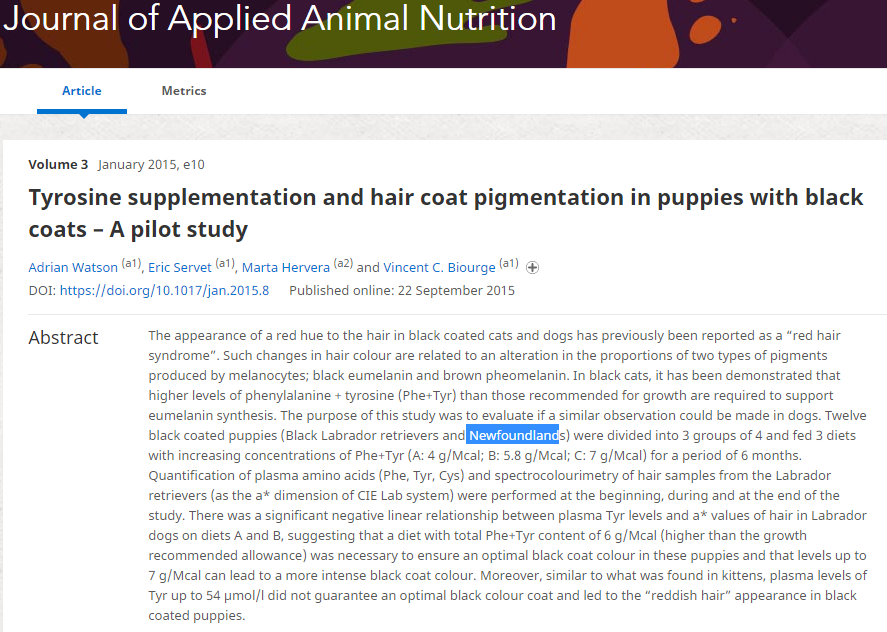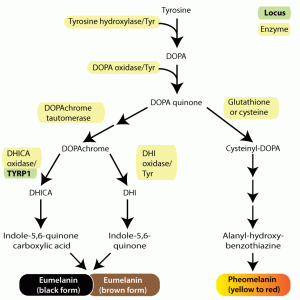Hai un cane dal mantello scuro? Leggi qui!
A volte i cani neri diventano rossicci. Di solito si pensa che lo schiarimento sia causato dal sole ma… ci sono cani neri che non diventano mai marroni e cani neri che sono marroni tutto l’anno, anche in inverno. Ho posseduto solo un cane nero e solo per qualche mese, era un greyhound recuperato dai cinodromi e era marrone anziché nero ma questo era causato da una grave anemia e dalla leishmaniosi. Sappiamo tutti che le malattie possono alterare il colore dei mantelli, ma anche l’alimentazione!
Ieri, la mia amica Lucia Casini, che è professore di Nutrizione Veterinaria pressol’Università di Pisa, a condiviso questo studio con me “Tyrosine supplementation and hair coat pigmentation in puppies with black coats – A pilot study.”  Lo studio, come potete leggere nell’astratto (in inglese), suggerisce che i cani dai mantelli scuri abbiano un fabbisogno di tirosina doppio rispetto agli altri cani e rispetto a quanto indicato nelle linee guida del NRC. Lucia ha anche spiegato che il ruolo della tirosina è stato studiato in maniera più approfondita nei gatti ma che molti cibi industriali, specialmente quelli poveri di proteine di origine animale, non contengono abbastanza tirosina per i cani neri. La fenilalanina sembra anch’essa avere un ruolo ed entrambi sono amminoacidi essenziali, ovvero vanno introdotti attraverso la dieta.
Lo studio, come potete leggere nell’astratto (in inglese), suggerisce che i cani dai mantelli scuri abbiano un fabbisogno di tirosina doppio rispetto agli altri cani e rispetto a quanto indicato nelle linee guida del NRC. Lucia ha anche spiegato che il ruolo della tirosina è stato studiato in maniera più approfondita nei gatti ma che molti cibi industriali, specialmente quelli poveri di proteine di origine animale, non contengono abbastanza tirosina per i cani neri. La fenilalanina sembra anch’essa avere un ruolo ed entrambi sono amminoacidi essenziali, ovvero vanno introdotti attraverso la dieta.

La carne, specialmente il maiale e gli avicoli sono una buona fonte di tirosina. Il National Research Council (USA) raccomanda: 2g di tirosina ogni 1000 kcal per i cani adulti e 3,5 g per i cuccioli ma i cani dal mantello scuro parrebbero necessitare di dosi doppie.